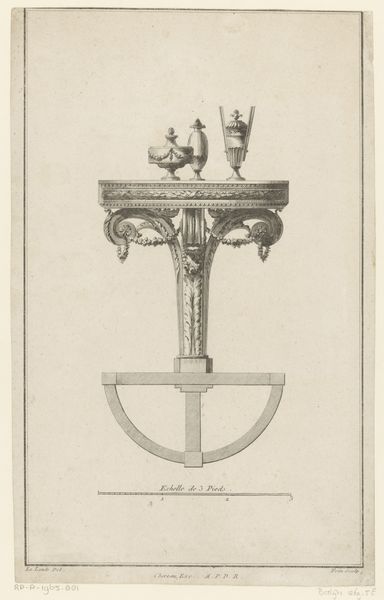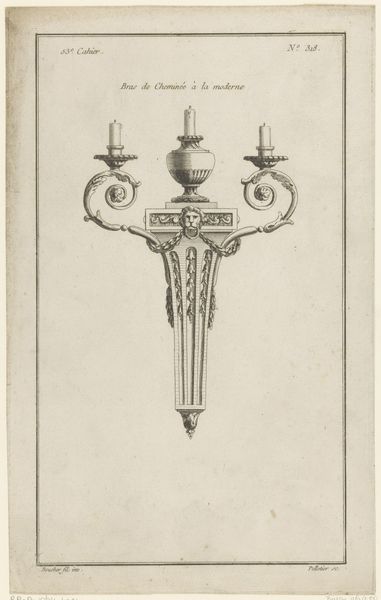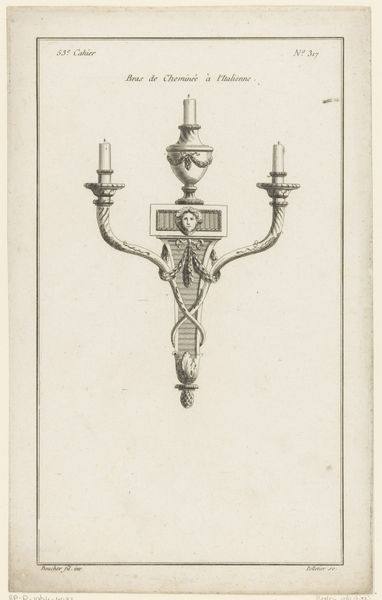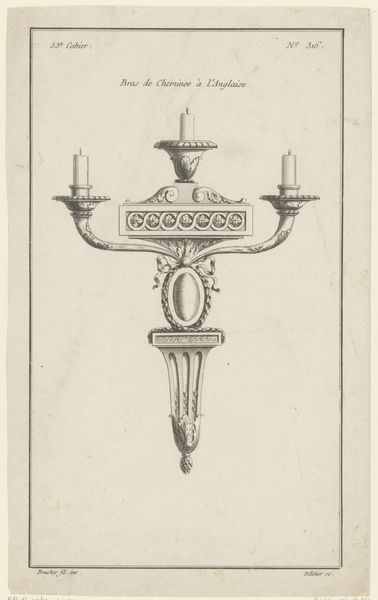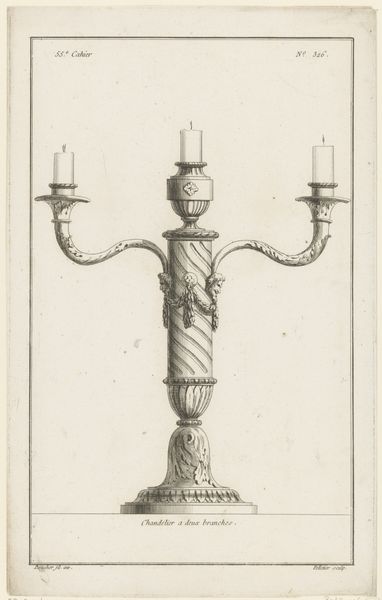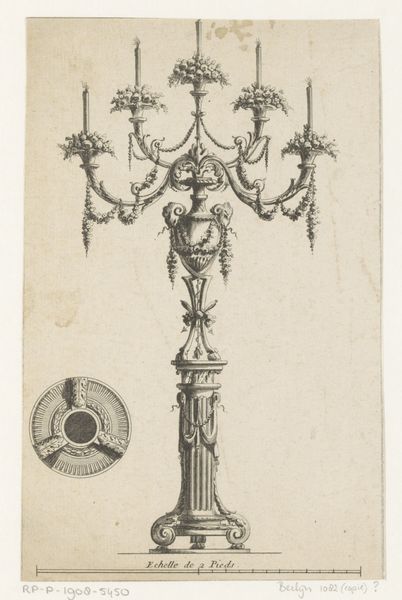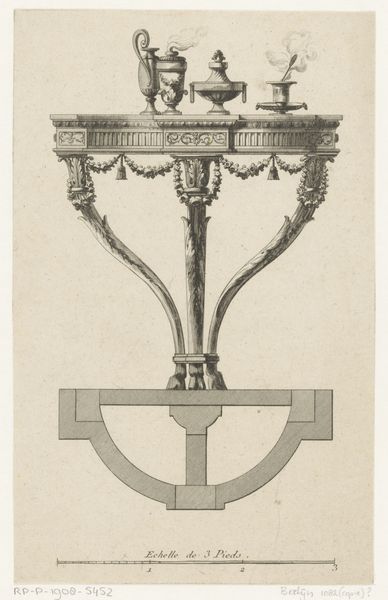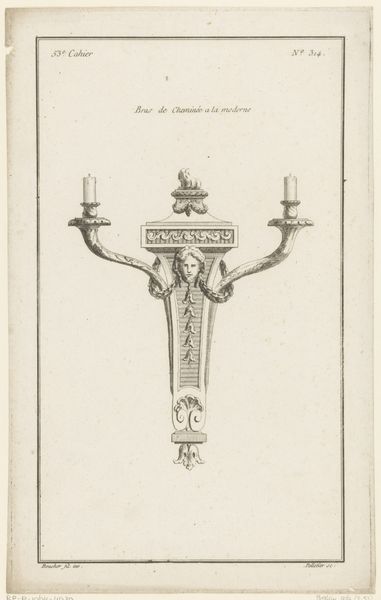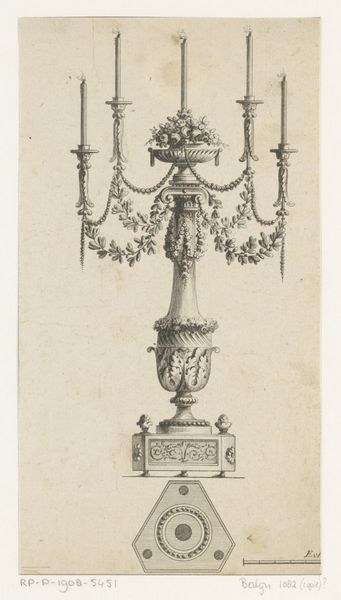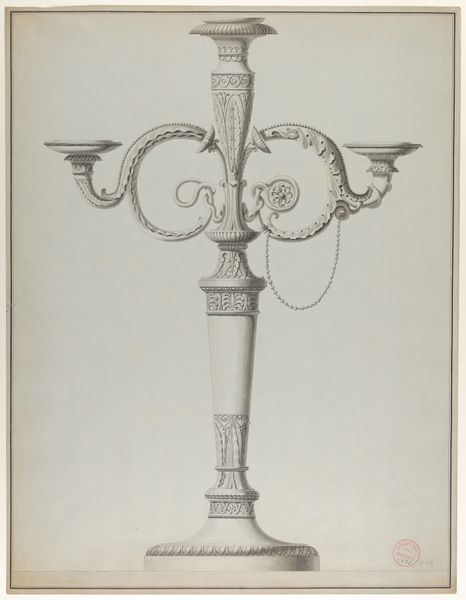
print, engraving
#
neoclacissism
# print
#
geometric
#
history-painting
#
decorative-art
#
engraving
Dimensions: height 328 mm, width 204 mm
Copyright: Rijks Museum: Open Domain
Curator: Jean Pelletier created this print titled "Kandelaar met guirlandes en krans," which translates to "Candelabra with Garlands and Wreath," sometime between 1772 and 1779. It's an engraving currently housed here at the Rijksmuseum. Editor: It looks so delicately drawn, doesn't it? It gives me a slightly melancholic vibe, perhaps because it feels so still, like a moment captured in the fading light. Almost like it's longing to illuminate a grand hall. Curator: That sense of stillness connects, I think, to its origins. Prints like these weren't necessarily meant as standalone art pieces. Instead, they served as prototypes and templates for artisans crafting actual objects – think metalworkers creating physical candelabras for the wealthy. We have to remember the role of prints in disseminating design ideas. Editor: So, it's functional art, or maybe art *for* functionality? Like sheet music before the performance? Still, even as a guide, the craftsmanship shines. Look at the detail in those garlands and the little wreath crowning the top section! Imagine seeing the metal version, it's probably quite fancy. It makes me consider the relationship between the artist who created the drawing, Pelletier, and the unknown artisan. What conversations would they have? Did they leave space for individuality? Curator: Precisely! And seeing as this was created during the rise of Neoclassicism, consider how those garlands reference classical motifs, democratized for consumption. The lines and symmetry are less baroque flash and more subdued sophistication to signal refinement and, crucially, social status via manufactured goods. The engraving's purpose was wider dissemination and manufacture. It reminds us that access to and consumption of art involves a vast support structure, beyond the single artist. Editor: Absolutely! The artistry doesn't exist in a vacuum. Looking at this, I’m appreciating how art movements affected even the creation of everyday objects. Curator: It demonstrates how even ostensibly "minor" decorative arts were important sites for constructing, literally manufacturing, ideology and taste. Editor: It makes me appreciate the artistry and social dynamics embedded even within this seemingly simple design! Curator: It makes one reflect on art's pervasiveness and its intersection with larger manufacturing economies.
Comments
No comments
Be the first to comment and join the conversation on the ultimate creative platform.
